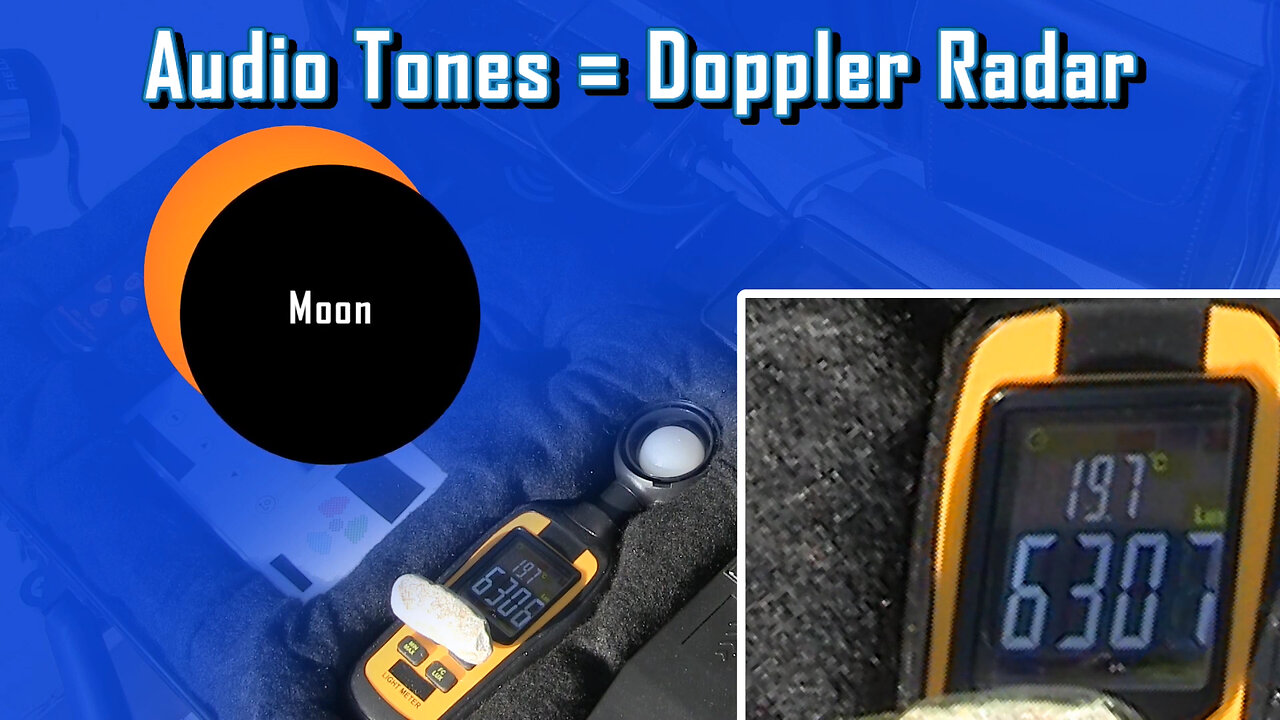Premium Only Content

Solar Eclipse: Measuring Lux and Listening on Doppler Radar (Nevada 2023)
Aura 14 Day Free Trial: https://aura.com/ufoseekers | Protect your family from identity theft, fraud, and online threats with Aura. Use the link above for a 14 day free trial and 63% Off! (Offer subject to change.)
Our team measured the Lux (Illumination) of the 2023 Annular Eclipse in Southern Nevada (Pahrump) on October 14 at 9:20-9:21am. We also listened via a Doppler Radar pointed directly at the sun during the annular eclipse.
Our minimum lux meter reading was 6,302 Lux. Our normal Lux for that time of day is approx. 8,000 Lux (with partial cloud cover approximated). Our meter measured a 21% + - decline in the sun's illumination during the annular eclipse. We also captured anomalies on the Doppler Radar although they may be bugs or birds.
An Annular Eclipse varies from a Total Eclipse in one major way. While a Total Solar Eclipse obscures the entirety of the sun at its peak totality, an Annular Solar Eclipse means that a small amount of annularity, popularly known as a "Ring of Fire," remains. These differences occur due to the moon's elliptical orbit around the Earth, so the distance is not constant and allows the moon to appear smaller or larger in the sky. Annular eclipses take place during a further part of the moon's orbit.
The lux (symbol: lx) is the unit of illuminance, or luminous flux per unit area, in the International System of Units (SI). It is equal to one lumen per square metre. In photometry, this is used as a measure of the intensity, as perceived by the human eye, of light that hits or passes through a surface. It is analogous to the radiometric unit watt per square metre, but with the power at each wavelength weighted according to the luminosity function, a model of human visual brightness perception, standardized by the CIE and ISO.
-
 2:24
2:24
UFO Seekers ®
5 months agoNEW CAPTURE! Mysterious Blue Orb & Glowing Rod Over Las Vegas!
4294 -
 59:20
59:20
The Dan Bongino Show
3 hours agoBitter CNN Goes After Me (Ep. 2375) - 11/21/2024
495K1.44K -
 40:47
40:47
Dave Portnoy
4 hours agoThe Unnamed Show With Dave Portnoy, Kirk Minihane, Ryan Whitney - Episode 37
10.7K -
 51:53
51:53
The Rubin Report
1 hour agoCrowd Shocked by Ben Affleck’s Unexpected Take on This Massive Change
24.7K14 -
 2:07:25
2:07:25
Steven Crowder
3 hours agoBREAKING: Russia Launches ICBM for First Time in History - What Happens Next?
297K157 -
 LIVE
LIVE
The Shannon Joy Show
4 hours ago🔥🔥While Americans Are Watching WWE Politics: Australia Is Ramping Up MANDATORY Digital ID🔥🔥
398 watching -
 LIVE
LIVE
LFA TV
14 hours agoTHE FIGHT IN ONLY BEGINNING! | LIVE FROM AMERICA 11.21.24 11am EST
5,643 watching -
 1:18:10
1:18:10
Graham Allen
5 hours agoPutin Vows Peace With Trump But WAR Under Biden!! + 400,000 Kids Are MISSING?!
97.6K177 -
 2:11:07
2:11:07
Matt Kohrs
12 hours agoMSTR Squeezes Higher, Bitcoin To $100k & Nvidia Post Earnings || The MK Show
47.6K1 -
 42:07
42:07
BonginoReport
6 hours agoNikki Haley's Hatred of Tulsi Gabbard Just Made Me a Bigger Fan (Ep.90) - 11/21/24
98.5K205